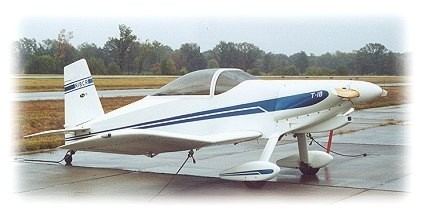Top speed 322 km/h Cruise speed 282 km/h Range 805 km Engine type Lycoming O-290 | Length 5.74 m Weight 408.2 kg Unit cost 3,670–3,670 USD (1971) | |
 | ||
Dicks thorp t 18 runs for the first time in years
The Thorp T-18 is a two-place, all-metal, plans-built, homebuilt aircraft designed in 1963 by John Thorp.
Contents
- Dicks thorp t 18 runs for the first time in years
- Design and development
- Operational history
- Variants
- Specifications S 18 with Lycoming O 360
- Related content
- References
The aircraft was originally designed as an open cockpit aircraft, powered by a military surplus Lycoming O-290G ground power unit engine, but evolved into a fully bubble canopied aircraft powered by engines of up to 200 hp (149 kW).

Design and development

The T-18 was designed to be easily constructed from sheets of aluminum, and use the modified Lycoming O-290G powerplant. It was originally designed with an open cockpit and with the cylinder heads protruding through the engine cowling in the interest of simplicity. Even as originally designed, the cruising speed was quite high. The design showed great potential for higher performance and so modifications were created to install larger, cowled Lycoming engines and a bubble canopy. These modifications allow a T-18 with 125 hp (93 kW) to cruise at 160 mph (257 km/h) and higher-powered examples to cruise in excess of 200 mph (322 km/h). Some aircraft have been constructed with retractable landing gear.

These performance improvements made the T-18 one of the most popular homebuilt designs of the 1970s and early 1980s until the Van's Aircraft RV kitplane series came on the market.

The T-18 was designed to use the 125 hp (93 kW) Lycoming O-290G Ground Power Unit. At the time the T-18 was developed these engines were inexpensive and widely available as military surplus generator motors. When converted for aircraft use they are virtually identical to the O-290D or O-290D2 aircraft engines.
Other Lycoming engines can be used, including the Lycoming O-320, Lycoming O-340, Lycoming O-360 and the Lycoming IO-360.
T-18 plans are currently available to builders from Eklund Engineering, which is also developing a laser-cut kit version and as of 2009 had aileron, flap and empennage kits. Classic Sport Aircraft at one time supplied plans, parts, and kits for the S-18 and the S-18T tricycle gear version, but is no longer in business as of 2014. Thorp Central acquired the assets of Classic Sport Aircraft and now provides these services.
By 2011 over 1600 sets of plans had been sold and 400 examples were flying.
Operational history
One T-18, N455DT, was built by Donald Taylor of California and flown around the world from Oshkosh, Wisconsin in 1976. This was the first successful circumnavigation of the world by a homebuilt aircraft. Taylor subsequently flew N455DT to the geographical North Pole, using a Sperry hybrid inertial navigation system.
Clive Canning flew another T-18 from Australia to England earlier the same year.
Variants
Specifications (S-18 with Lycoming O-360)
Data from Eklund & Classic Sport Aircraft
General characteristics
Performance
Related content
Related development:
Comparable aircraft:
